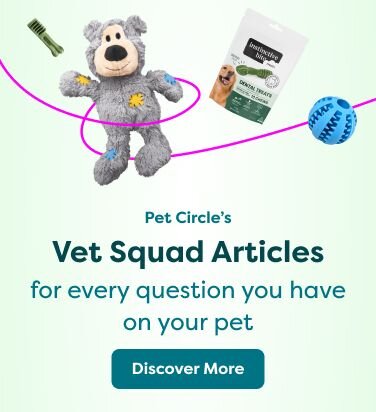Last Updated: 09/09/2025
Common Illnesses in Pet Birds
Protect your bird's health! Our vet guide details common illnesses like parasites, PBFD, and nutritional deficiencies. Learn why vet checkups are crucial and how proper diet and husbandry can prevent disease. Spot symptoms early and keep your feathered friend happy and chirping.
Author: Dr Nicole Wynne BSc BVMS MANZCVS (Unusual Pets)
Reading Time: 20 minutes - medium read
Birds make wonderful and intelligent pets. Many people consider these feathered friends an easier pet to care for than a dog or cat, as they don't need walking and eat less. However, it's important not to become complacent with their care, as birds are prone to certain health conditions and are masters at hiding signs of illness until they are very unwell.
Although birds don’t receive regular vaccinations like dogs and cats, it is still important for them to get regular checkups from an avian veterinarian. These visits can catch illness early and your vet can provide vital advice on diet and husbandry. It is also important not to delay veterinary treatment by trying home remedies, as many of these are not effective, and at worst, may make your pet worse. Many illnesses cause non-specific symptoms like a "fluffed up" appearance, and effective treatment needs to be targeted to the specific illness, so if your bird ever appears unwell, you should always take them to the vet. It's a great idea to find your closest avian vet before an emergency, so you know who to call when you need them.
Symptom checker
Use the drop down menu below to check what specific symptoms in birds may indicate. It is important to note that this list is not comprehensive, and many symptoms may be subtle and go unnoticed. Please be sure to check in with an Avian vet if you are concerned about your bird's health at any stage.
External parasites
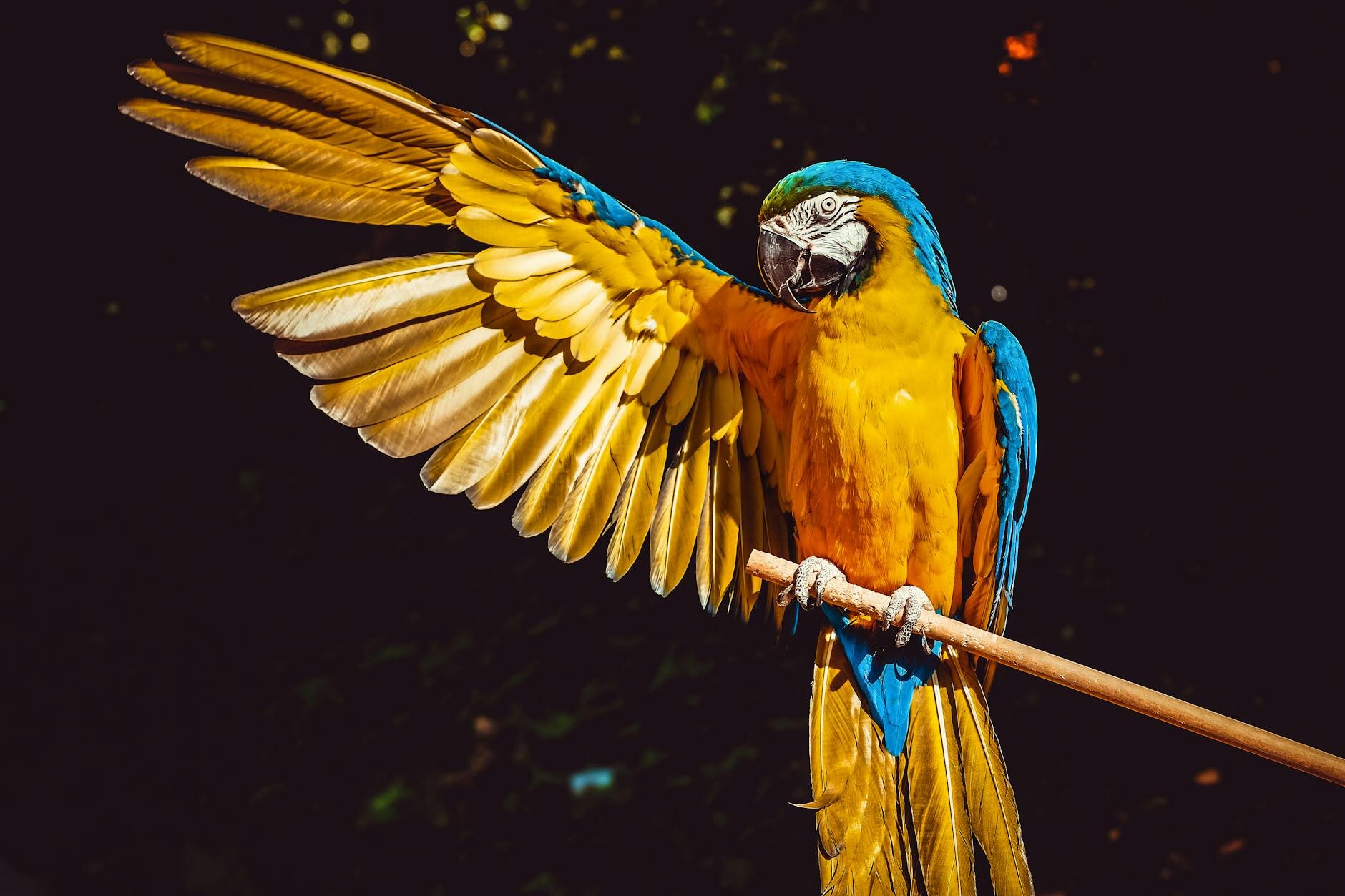
Mites and lice are the two most common external parasites affecting pet birds. They are not transferable to humans and are typically contracted from a bird's original aviary or from contact with wildlife.
Mites
- Appearance: Mites are microscopic creatures that cannot be seen with the naked eye.
- Symptoms: They cause an itchy, scaly, and crusty appearance on a bird's face or feet. Less common types can affect the air sacs, leading to breathing difficulties.
- Commonly affected: Mites are particularly common in budgies and cockatiels.
Lice
- Appearance: Unlike mites, lice are often large enough to be seen with the naked eye.
- Symptoms: They cause significant itchiness, which can result in feather loss and other skin conditions.
- Commonly affected: While more common in chickens, lice can also affect parrot species.
Prevention and treatment
If you suspect your bird has mites or lice, you should always consult with your veterinarian to get an accurate diagnosis and an effective treatment plan.
- For new birds: Treat any new bird with a suitable mite and lice spray and quarantine them from your other birds for at least two days before introduction.
- For birds with outdoor access: Consider a preventative spray every 6-8 weeks to keep them parasite-free.
- Important: Always check with your vet regarding the correct product, dose, and frequency for your specific bird to avoid the risk of overdose.
Internal parasites
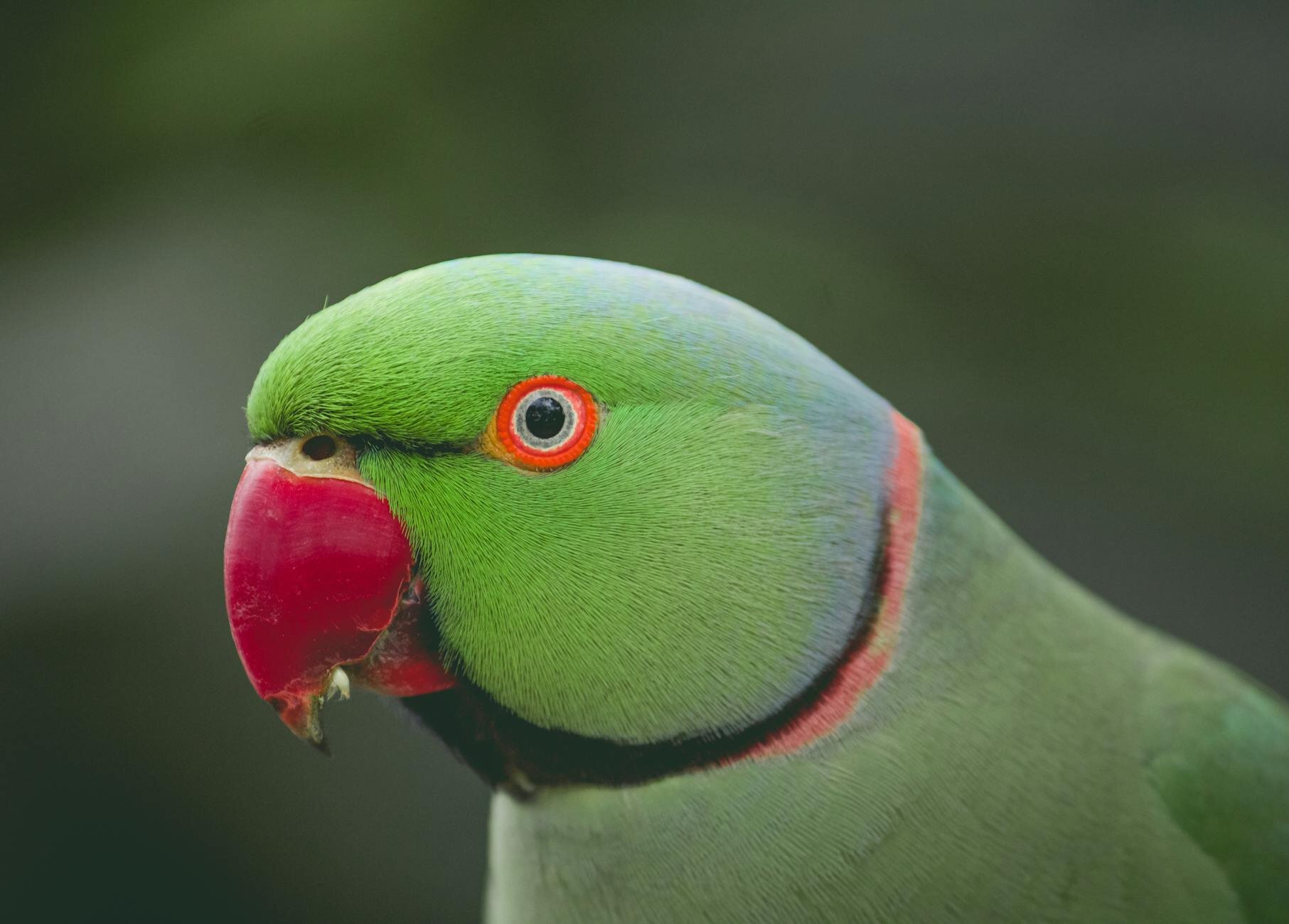
There are many internal parasites that can affect birds, including worms (roundworms, tapeworms) and protozoa (coccidia, giardia). Thankfully, these are rare in pet birds that come from a reputable breeder and are kept mostly indoors.
Symptoms
- Weight loss
- Lethargy or sitting fluffed up
- Decreased appetite
- Abnormal droppings, such as diarrhoea or blood in the stool
Diagnosis and treatment
- Vet check is essential: The best way to diagnose an internal parasite is to have your vet check a faecal sample. This is crucial because different parasites require different treatments.
- Worming: Your vet can recommend a suitable worming treatment. An in-water treatment like Vetafarm Wormout Gel can treat all major worm species.
- Protozoal infections: Infections like coccidia and giardia require a specific diagnosis and antibiotic treatment from your veterinarian.
Prevention
- Routine worming: Unlike dogs and cats, most indoor pet birds do not require regular worming every three months.
- When to worm: You should consider worming your bird if they have access to the outdoors or are a new bird being introduced to your flock.
- General hygiene: To help prevent protozoal infections, ensure your bird's cage and water are kept clean and avoid contact with wild birds.
Nutritional deficiencies
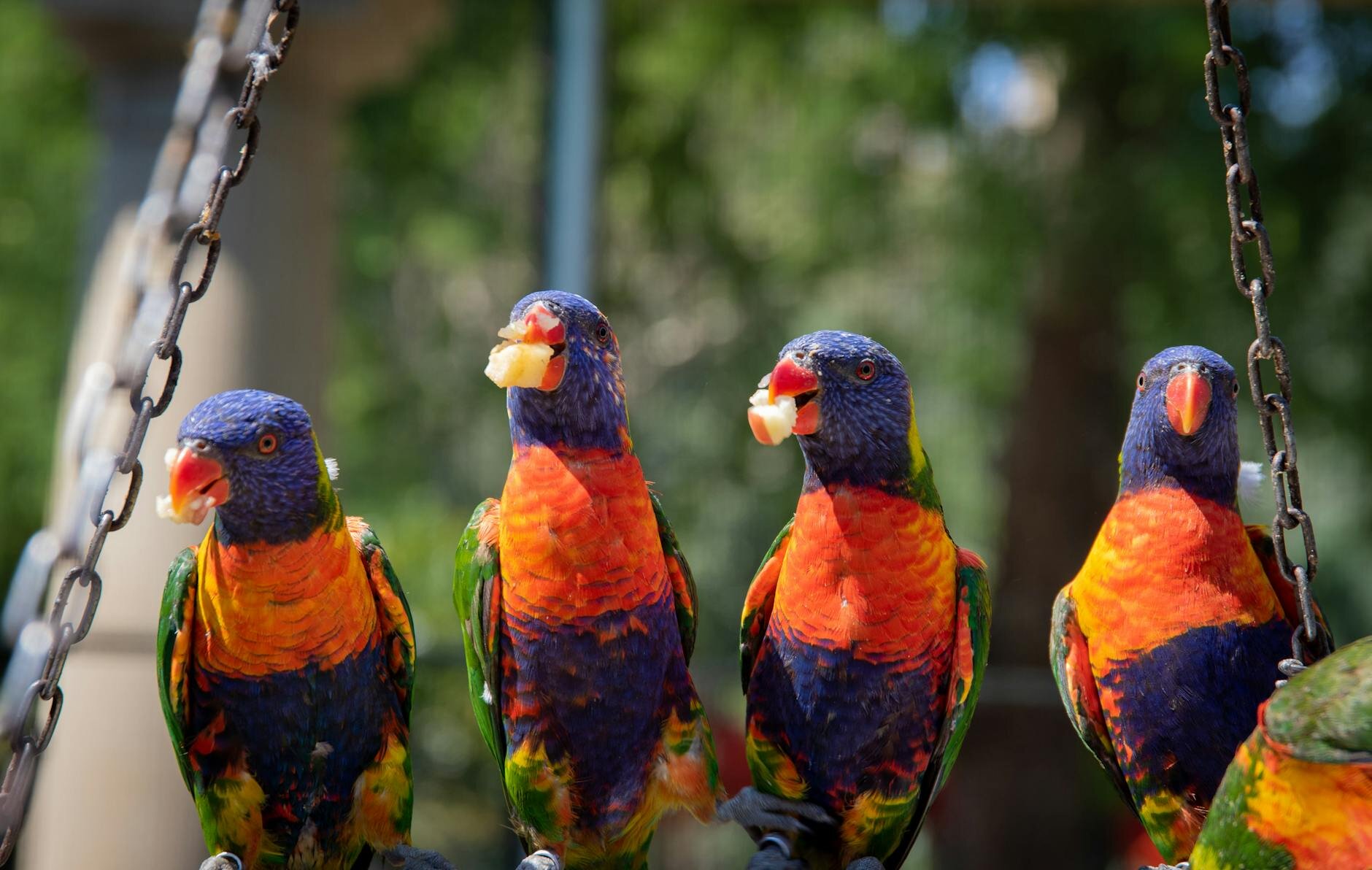
Nutritional deficiencies are extremely common in pet birds and are usually caused by an incorrect or unbalanced diet. The most common issues are Vitamin A deficiency, iodine deficiency, and imbalances of calcium, phosphorus, or Vitamin D.
Vitamin A deficiency
This often occurs in birds fed a diet high in seeds, which lack adequate Vitamin A.
- Symptoms: Can include nasal discharge, sneezing, swollen eyes, poor feather quality, decreased appetite, and a weakened immune system, leading to frequent infections.
- Prevention: The best way to reduce the risk is to feed your bird a high-quality pelleted diet, using seeds only as an occasional treat.
Iodine deficiency (Goiter)
This is another condition commonly seen in birds on an all-seed diet.
- Symptoms: The main sign is breathing difficulty or wheezing sounds.
- Prevention: This deficiency can be managed by swapping from a seed-based diet to one rich in high-quality pellets.
Calcium, Phosphorus & Vitamin D imbalances
These imbalances are also linked to all-seed diets (especially those high in sunflower seeds) and a lack of exposure to sunlight.
- Symptoms: Can include weakness, tremors, seizures, bone fractures, and females laying thin-shelled eggs.
- Prevention: Switch to a high-quality pelleted diet and provide daily access to direct sunlight, which is essential for Vitamin D production and calcium balance.
Important note on sunlight: When giving your bird access to sunlight, always ensure they also have access to shade to avoid overheating. They must be supervised or in a predator-proof enclosure to keep them safe.
Find out more about Why Your Bird Should be Eating Pellets.
Obesity
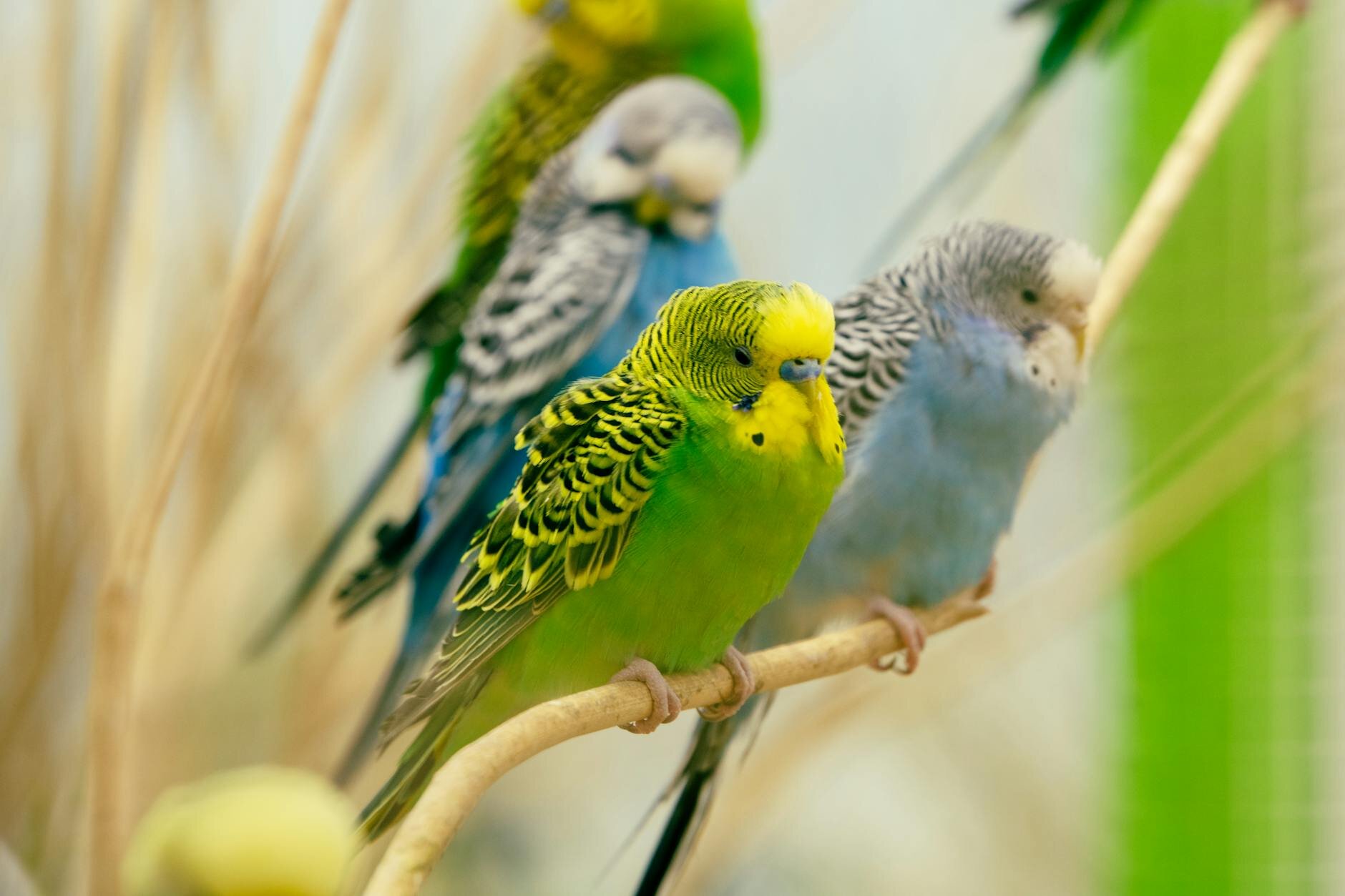
Obesity is a far more common issue in pet birds than many owners realize. It can be difficult to determine if a bird is overweight just by looking at them due to their feathers.
How to check for obesity
- Body condition is assessed by feeling for the keel bone, which is the bony ridge that runs down the center of their chest, between the breast muscles.
- In a healthy-weight bird, this bone should be palpable (you can feel it) but not overly sharp or prominent. There should be a small amount of muscle on either side.
Causes
- The primary cause of obesity is a diet high in seeds, particularly sunflower seeds.
- Sunflower seeds are very high in fat and calories, often referred to as 'birdie mars bars'.
Prevention and management
- The most effective way to prevent obesity is to feed your bird a base diet of high-quality pellets.
- Seeds should only be offered as an occasional treat, not as the main meal.
- It is always possible to transition a bird from a seed-only diet to a healthier pellet-based one, though it may take patience.
Yeast infections
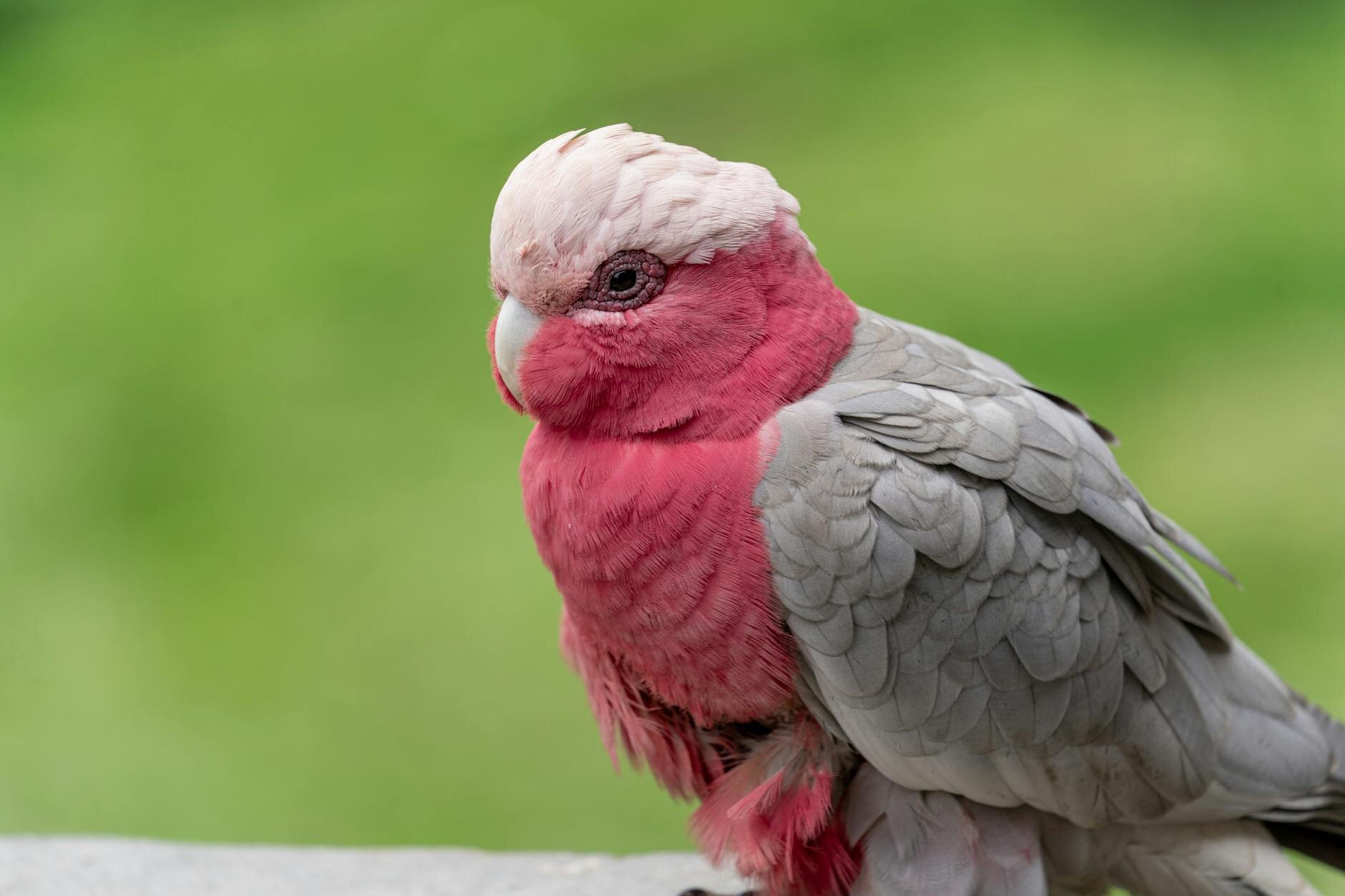
Yeast (or fungal) diseases are common in birds, but they are often a secondary problem that occurs when the immune system is weakened by another condition, such as a nutritional deficiency or stress.
Symptoms
Yeast infections typically affect the respiratory or digestive systems and can cause a range of symptoms, including:
- Weight loss
- Lethargy
- Regurgitation or diarrhoea
- Sneezing or breathing difficulties
Treatment and prevention
- Yeast infections require a proper diagnosis and treatment plan from your veterinarian, but you can help reduce your bird's risk of developing a yeast infection by focusing on prevention at home.
- Support the immune system: The best prevention is a strong immune system, which is achieved through a balanced diet and low-stress environment.
- Provide a balanced diet: Ensure your bird is on a high-quality diet (such as pellets and fresh vegetables) to avoid nutritional deficiencies, particularly a lack of Vitamin A.
- Reduce stress: Minimise stress by giving your bird plenty of attention and daily time outside of its cage. Psychological neglect can be a major cause of stress, especially for solitary birds.
Psittacosis or Avian Chlamydia
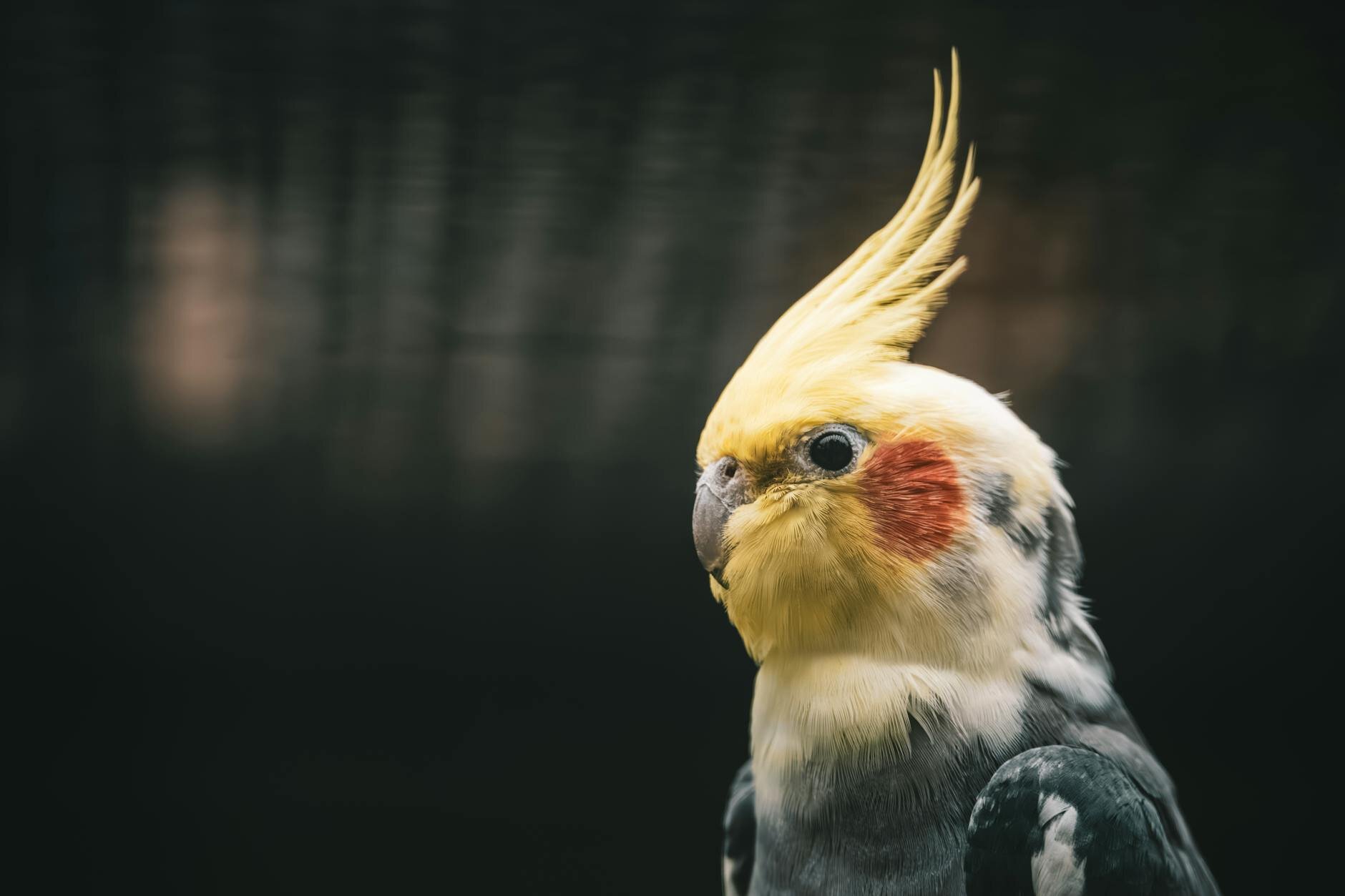
What is psittacosis and is it dangerous to people?
Psittacosis (avian chlamydia) is a disease caused by the bacterium Chlamydia psittaci. It is a key concern as it can be transmitted from birds to humans. Its symptoms are non-specific and mimic other respiratory illnesses, so a definitive diagnosis from a vet, which may require specific testing, is essential for proper treatment.
Symptoms
- Swollen eyelids
- Sneezing and coughing
- Green droppings
- Increased respiratory effort
- Weight loss
- Lethargy
- Diarrhoea
The severity of Psittacosis is highly variable. It can range from birds that are asymptomatic carriers to those that experience severe illness and even death.
Asymptomatic carriers
- An asymptomatic carrier is a bird that is infected and can shed the infectious agent, but does not show any symptoms of being sick.
- These carrier birds may only show signs of illness if they become stressed or unwell for other reasons.
Testing and prevention
- Test New Birds: The best way to prevent introducing this disease to your household is to have any new bird tested for avian chlamydia before introducing them to your other birds.
- Testing in Australia: Fortunately, accurate and cost-effective testing is readily available at veterinary laboratories in Australia. Your vet can take and submit the necessary samples, which are usually blood or faeces.
Treatment
- Success varies: The success of treatment can depend on many factors, including the severity of the illness and the bird's age, nutritional status, general immunity, and stress levels.
- Medication: Treatment typically involves specific antibiotics (oral or injectable) and supportive care to make the bird more comfortable while the medication takes effect.
- Finish the full course: It is crucial to finish the entire course of antibiotics, even if the symptoms improve. Psittacosis can easily recur if not treated completely.
Psittacine beak and feather disease
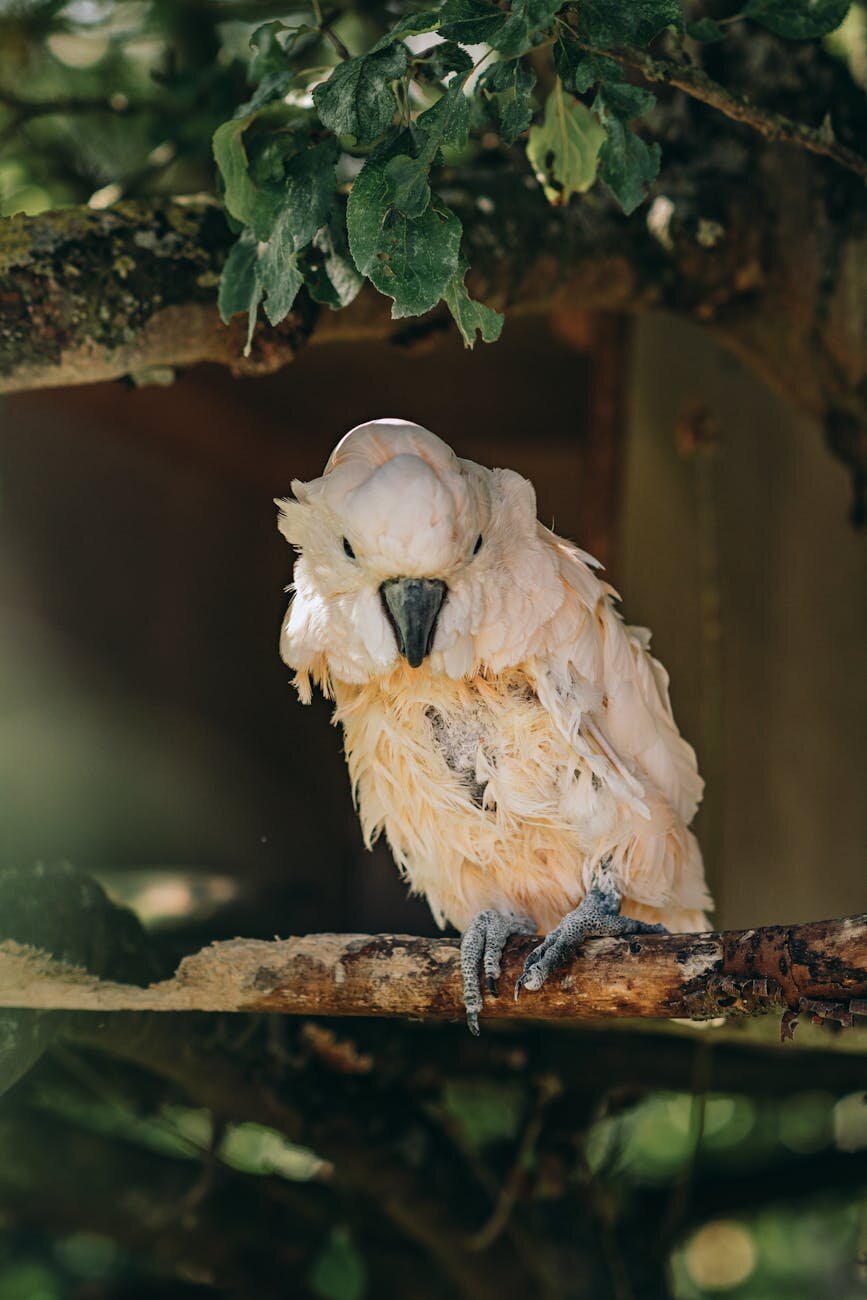
What is Psittacine Beak and Feather Disease (PBFD)?
Common in wild Australian parrots, Psittacine Beak and Feather Disease (PBFD) is a contagious virus causing beak/feather deformities and reduced immunity. It is spread via contaminated feathers or dander. The existence of asymptomatic carriers makes control challenging, so a proper diagnosis is vital. Fortunately, reliable testing using blood or feathers is readily available in Australia.
Symptoms
- Abnormal feathers in shape, colour, size, and development
- Loss of powder down
- Beak and nail deformities
- Loss of feathers
- Secondary infections
- Sudden death in young birds
Sadly, there is currently no vaccine or effective treatment for PBFD. However, getting a proper diagnosis is still crucial for managing the disease.
Management after diagnosis
An infected bird can still live a comfortable life with the right supportive care. A diagnosis is important for several reasons:
- Risk to other Birds: An infected bird is a contagious risk to other parrots.
- Secondary infections: PBFD weakens the immune system, so diagnosed birds require excellent nutrition and frequent vet visits to manage their high risk of developing secondary infections.
Prevention
Because there is no cure, prevention is essential. To protect your bird from catching the disease, you can take the following steps:
- Source reputably: Only buy birds from a reputable breeder.
- Strict hygiene: Ensure high standards of hygiene at home, including good dust control.
- Avoid wild birds: Make sure your pet bird has little to no contact with wild birds.
- Support immunity: Keep your bird's immune system strong through excellent nutrition, welfare, and general care.
Gastroenteritis and ingluvitis
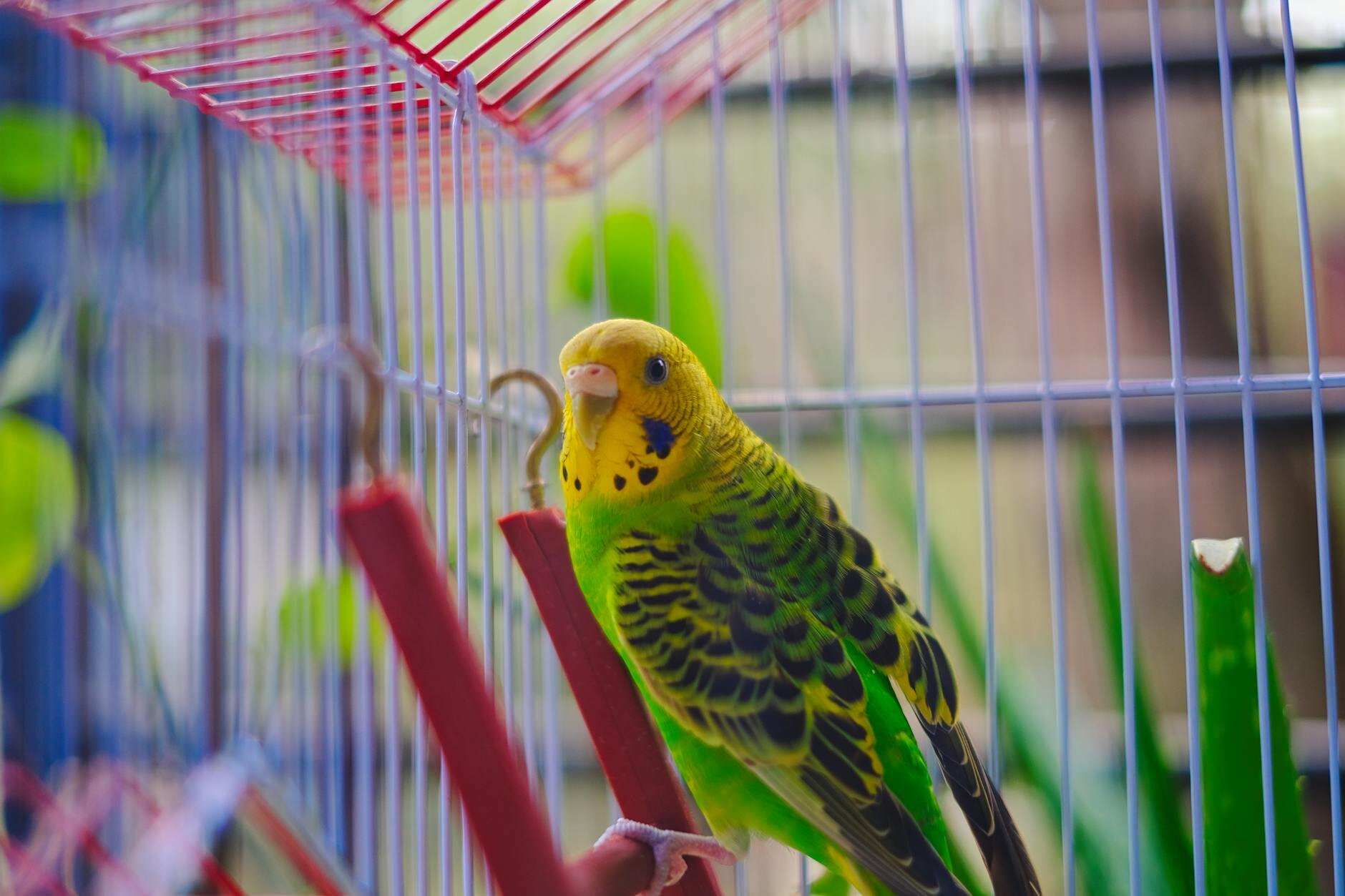
Gastroenteritis (inflammation of the GI system) and ingluvitis (inflammation of the crop) often occur together in birds, typically due to an infection. Because the cause can be bacterial, fungal, protozoal, or parasitic, antibiotics are not always the answer. Your vet will examine crop and faecal samples to identify the specific organism and choose the correct treatment.
Symptoms
- Regurgitation
- Inappetance
- Weight loss
- Diarrhoea
- Change in dropping colour
- Lethargy
- Soiled vent or tail
It is vital to seek veterinary attention as soon as you notice any concerning symptoms in your bird. It is easy to miss weight loss in birds, and this can quickly become life-threatening.
A warning about over-the-counter treatments
It is important to avoid using over-the-counter, in-water treatments for the following reasons:
- Incorrect treatment: They may not be the right medication for your bird's specific illness.
- Difficult dosing: It is very difficult to dose them appropriately in water.
- Dehydration risk: These treatments can reduce how much your bird drinks, which can contribute to dehydration.
What to expect from your vet
- Oral medication: Your vet will likely prescribe oral medication and will show you how to administer it. This is not as daunting as it sounds, and all birds can be handled safely with an appropriately sized towel.
- Follow-up appointments: It is crucial to go back for your revisit appointment at the recommended time, as these health issues can commonly recur.
Trauma
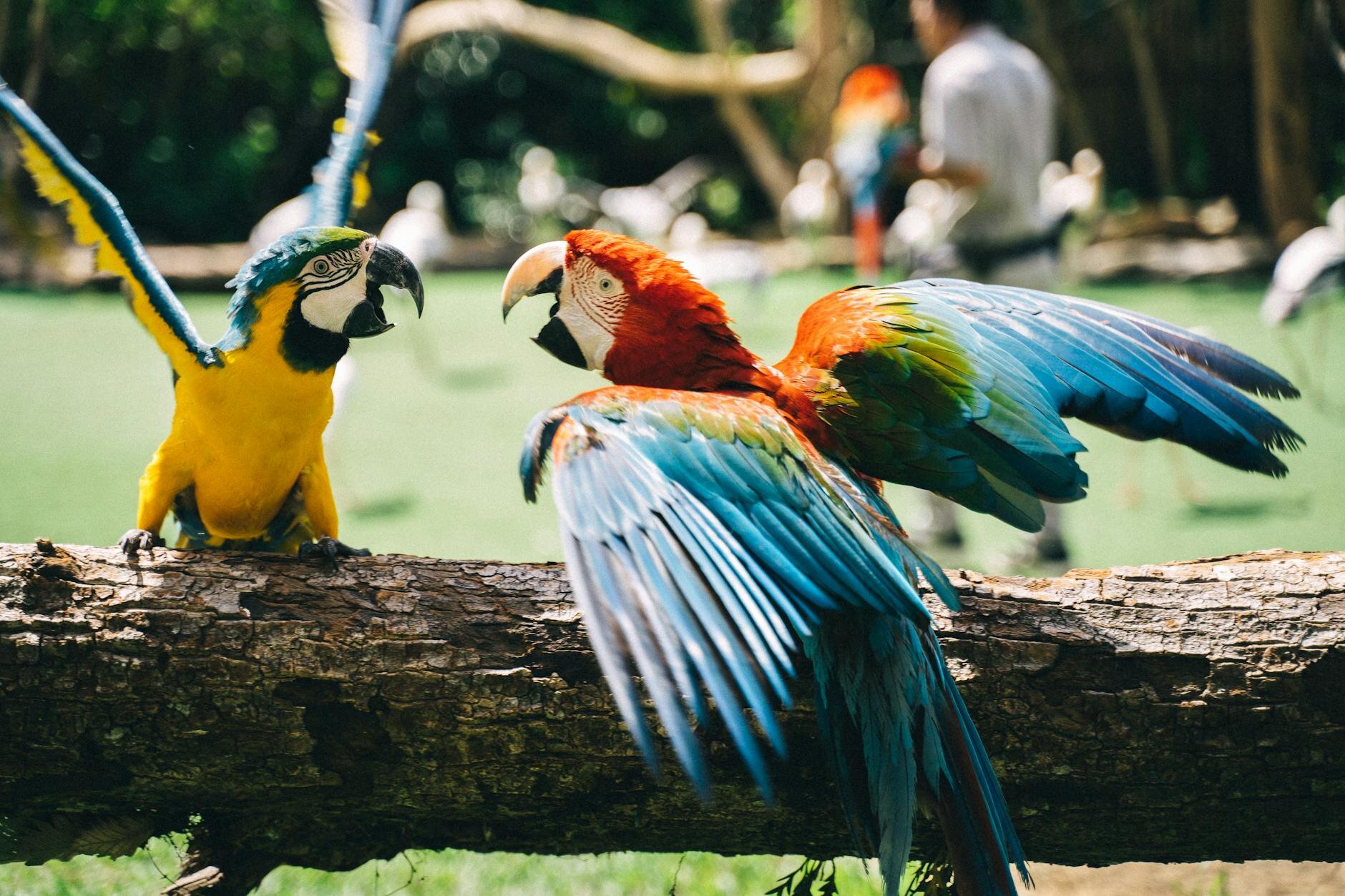
Pet birds are prone to all sorts of injuries, from fractures and crash-related impacts to injuries caused by other pets in the household.
What to do if your bird is injured
- Seek vet care immediately: If you suspect your bird has sustained an injury, you must visit a vet as soon as possible.
- Go to emergency if needed: If you cannot get an appointment with an avian vet on the same day, go to an emergency veterinary hospital. The minimum requirement for any injury is pain relief, which any vet can provide.
- Diagnostics: The full extent of an injury may not be obvious. Your vet may recommend diagnostics like X-rays to understand what's wrong.
- Treatment: Depending on the severity, treatment may involve hospitalisation to stabilise a bird in shock, or surgery in the worst cases. Your vet will discuss all the risks, benefits, and aftercare with you.
Do not treat your bird at home
- Never attempt to bandage or treat your bird without direct veterinary advice.
- Bandages are very easy to apply incorrectly on a bird's delicate body and can cause much more harm than good.
- Risks of improper bandaging include cutting off blood supply, causing improper healing or stopping a wound from healing and acting as a source for infection.
Malocclusion
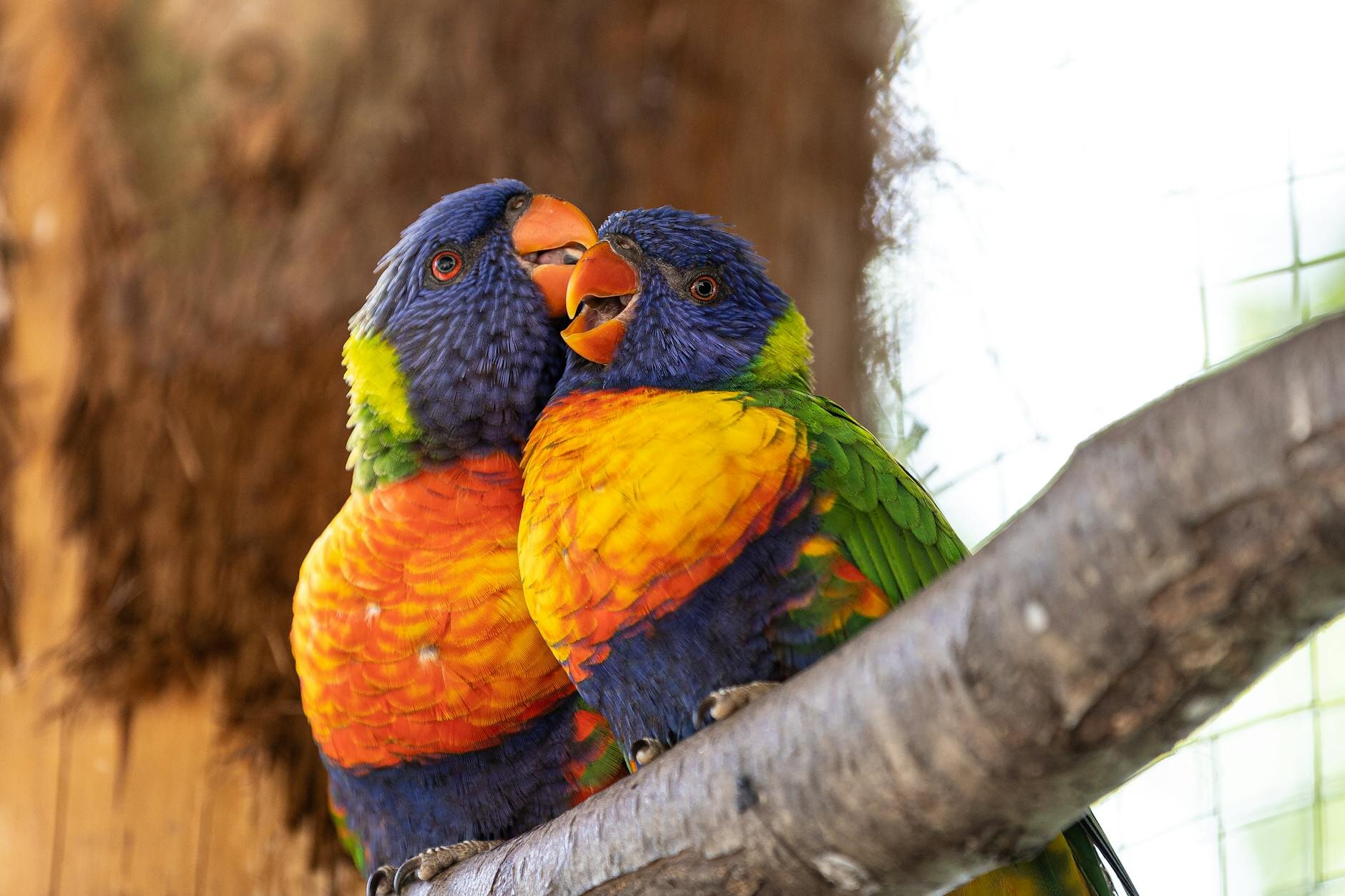
Beak malocclusion occurs when the top and bottom halves of the beak don’t align properly. This prevents the beak from wearing down naturally, causing it to become overgrown and often poor quality.
Risks
- Difficulty eating: The bird may be less able to eat properly, which can lead to weight loss.
- Injury: The overgrown beak can get caught on cage bars, toys, or other objects, leading to accidents and injuries.
Causes
It is important to determine the cause of the malocclusion, especially if an older bird with a previously normal beak develops the problem.
- Congenital: The bird may be born with an abnormal beak.
- Injury or malnutrition: Trauma to the beak or a poor diet can lead to improper growth.
- Disease: Conditions like Psittacine Beak and Feather Disease (PBFD) can cause beak deformities.
Treatment
- Veterinary procedure: Beak malocclusion is usually treated by a vet, who will use a special burr to carefully reshape the beak. Most affected birds will need this correction every 2-4 months.
- Do not attempt at home: This is a highly skilled job that should only be performed by a veterinarian. Improper burring can make the beak worse or even stop it from growing back.
- CRITICAL WARNING: Never use nail clippers or pliers on your bird's beak. The concussive force can cause the beak to crack lengthwise, causing severe pain and damage.
Liver disease
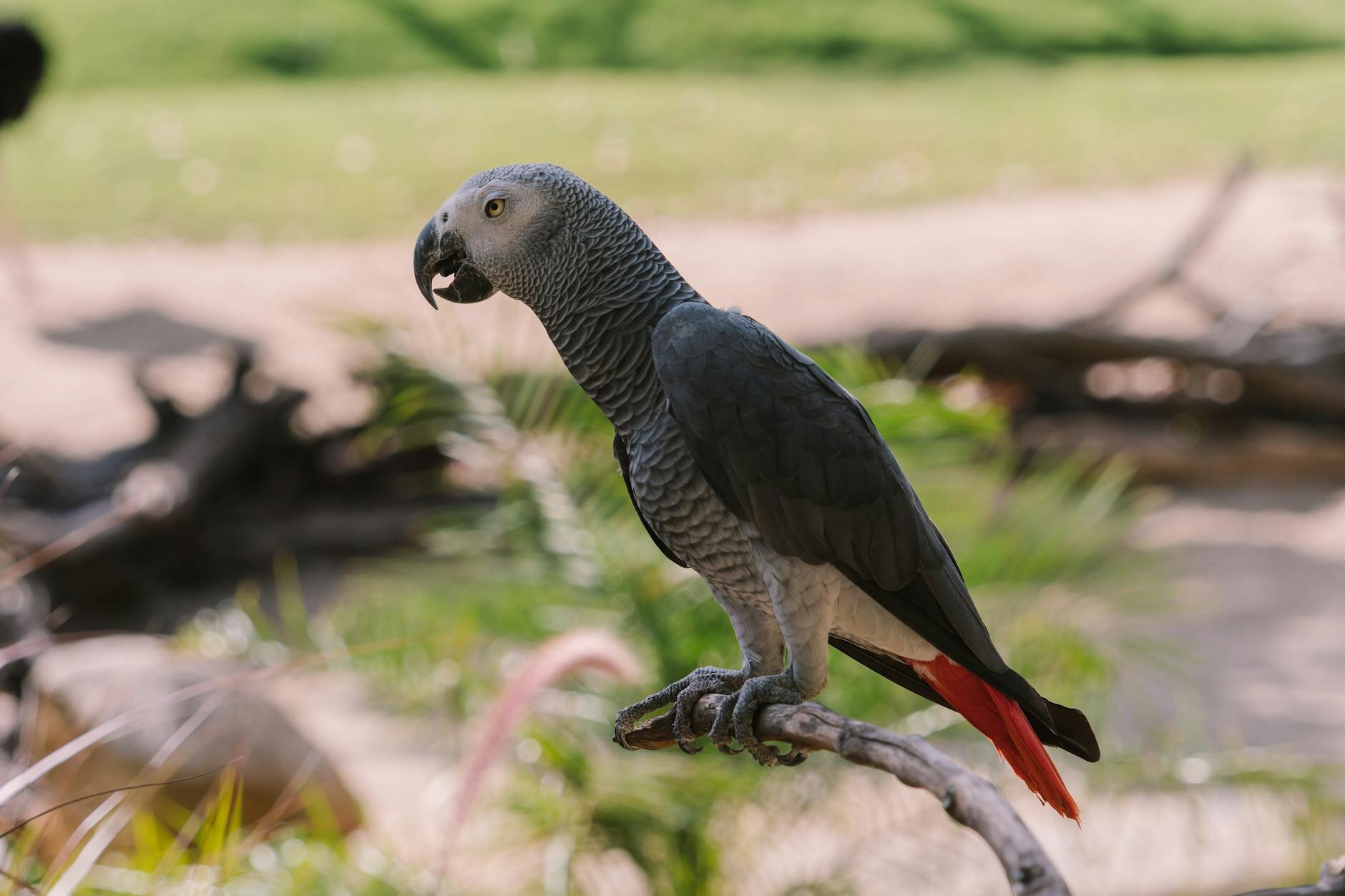
Liver disease is a subtle but serious issue in pet birds, as the symptoms can be difficult to detect in the early stages. It can be caused by a number of issues, including infections, viruses, parasites, and toxins.
Symptoms
Symptoms can be generalised and vary depending on the cause. Be on the lookout for:
- Poor feather condition or abnormal colouring
- Feather plucking
- An enlarged tummy (coelom)
- Neurological signs like seizures or tremors
- Loss of appetite or weight loss
- Changes in droppings (colour change, watery)
- Regurgitation
Causes
- Fatty Liver: This is the most common type of liver disease and is predominantly caused by an inappropriate diet that is high in seed.
- Heavy Metal Toxicity: This preventable condition is caused by the bird ingesting metallic objects containing toxic heavy metals like lead, zinc, or nickel.
Prevention
A proper diet is the best way to prevent fatty liver disease.
- A parrot's diet should primarily consist of high-quality pellets and fresh foods like fruits and vegetables.
- Seeds should make up a small portion of the diet, not the main meal.
- If your parrot has been on a high-seed diet, it is best to consult an avian veterinarian to help you safely transition them to a healthier one.
- Avoid cheap metallic toys or cages which may contain toxic metals.
- Choose high-quality cages made from stainless steel and provide natural toys made from materials like coconut shell, jute fibre, paper, and wood.
- Be aware that older houses may contain lead in paint, soil, or building materials.
- If you are concerned about potential exposure, speak to your vet about testing options.
Read through our feeding guides for birds
Checkout our Vet Guide on feeding your small Parrot!
In our guide we cover the essentials for feeding medium sized parrots like African Greys and Ringnecks, plus foraging ideas for enrichment for a long, happy life.
Learn about the best diet, and feeding and enrichment products for your cockatoo's physical and mental wellbeing.
Macaws are some of the most majestic animals, learn the right food to feed them
Written by one of our expert veterinarians, this guide explains the nutritional needs of Eclectus parrots, including what and how to feed them.
Authored by an expert vet, this guide covers essential nutrition tips for lorikeets and lories . Learn what and how to feed your birds for vibrant health and happiness.
Want to help your local honeyeaters? Putting out sugar water or bread can do more harm than good. Our vet explains the risks of improper feeding and shows you the best way to attract these native birds: by creating a safe garden sanctuary with Australian native plants and fresh water.
Learn all about feeding South American Birds from this vet written article
Sprouting seeds is a great way to add variety to your bird's diet and encourage foraging. This vet-written guide explains the benefits, like unlocking digestible proteins, vitamins, and minerals. Learn the easy steps to sprout seeds at home using simple containers and a sieve.
Reproductive disease and overactivity
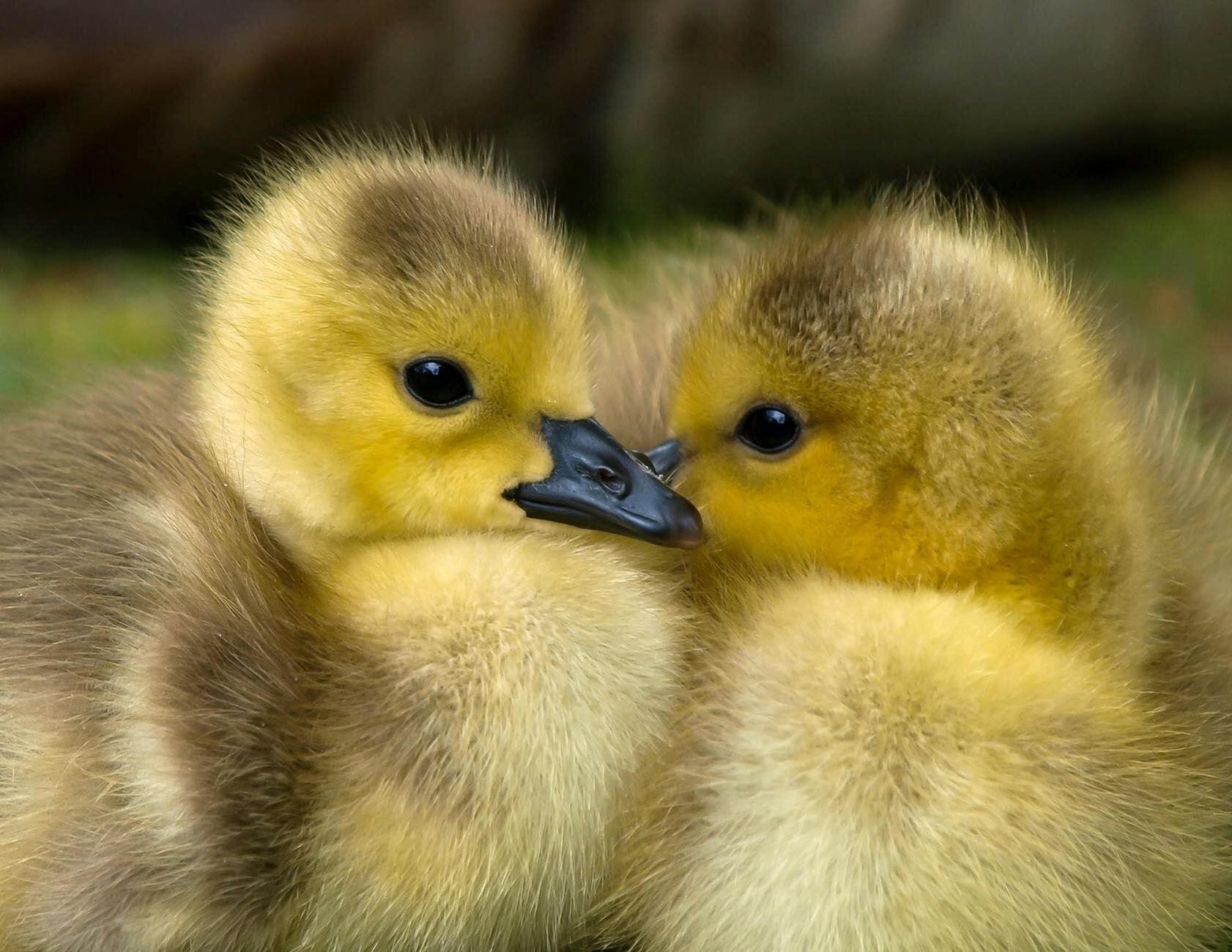
Reproductive issues in pet birds can be confusing and challenging to manage, as their symptoms can often mimic other diseases. Problems can affect both males and females and often lead to severe behavioural issues.
Common reproductive problems
- Excessive or abnormal egg laying
- Egg binding (when a female is unable to pass an egg)
- Infections or inflammation of the oviduct
- Testicular tumours
- Hormonal imbalances
- Overstimulation and chronic reproductive activity
- Calcium deficiency
Factors that can trigger reproductive issues
Several factors can contribute to the development of reproductive problems.
- Inappropriate human contact: Patting or stroking a bird on its back can mimic mating behaviour and overstimulate the reproductive system. Touch should be limited to the head and neck area.
- Incorrect day length: Longer daylight hours stimulate reproductive activity. Many pet birds are exposed to 16+ hours of artificial light, which can be a problem. To maintain a healthy reproductive balance, ensure your bird is exposed to no more than 12 hours of light per day.
- Enclosure items: Items like nest boxes and mirrors can also stimulate excessive reproductive behaviour.
- Inappropriate diet: Diets high in calories and fat (especially seed-only diets) can cause obesity, which complicates egg-laying and can also increase reproductive activity. Seed-only diets are also deficient in the vitamins and minerals that are essential for good reproductive health.
Symptoms
Symptoms of reproductive disease are varied and can be broken down into two main categories.
Egg-associated symptoms (in females):
- Droppings accumulating on the tail or vent
- Swelling of the tummy (coelom)
- Inability to fly or climb
- Straining
- Weight loss and lethargy
Behavioural symptoms of overstimulation (in both sexes):
- Aggression and biting
- Increased vocalisation
- Feather plucking or over-preening
- Increased destructiveness
Pododermatitis
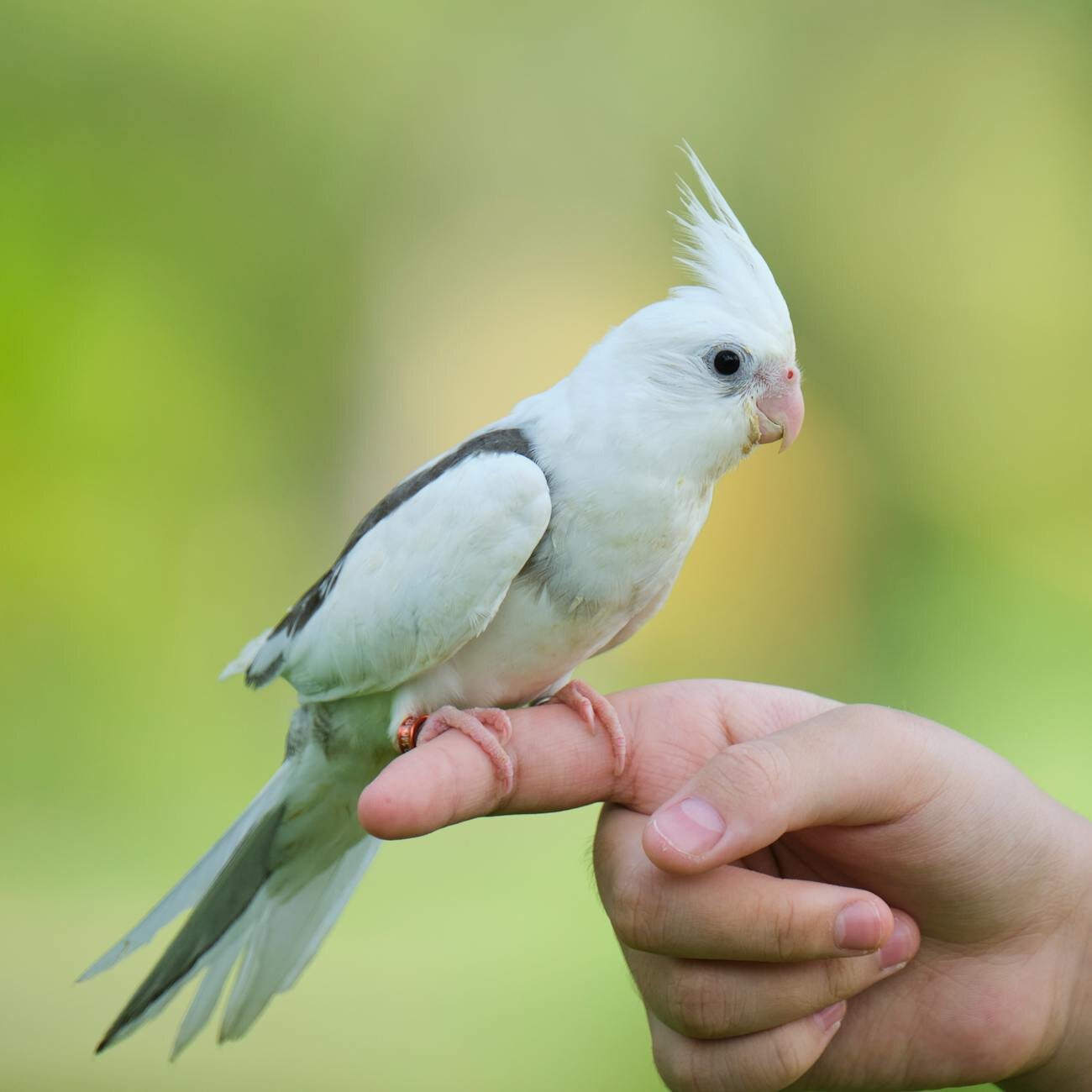
What is pododermatitis (bumblefoot)?
Also known as 'bumblefoot', pododermatitis is a common inflammatory disease that affects a bird's feet. It is often caused by issues in a bird's environment, such as their diet or the perches they use.
While bumblefoot is reversible in its early stages, it can cause permanent injury in the later stages, especially once an infection takes hold. The good news is that this disease is highly preventable. Ensuring your bird is on a good diet and providing appropriate perches can greatly reduce the risk.
Symptoms
- Lameness
- Swelling and redness of the feet
- A central black area of dead tissue (necrosis), which may be surrounded by a ring of inflamed and swollen tissue
- Loss of appetite (inappetence)
- Weight loss
Prevention
Prevention focuses on two key areas: providing the right perches and feeding a healthy diet.
- What to use: Natural branches are the best option. It's also beneficial to provide a range of different, appropriate sizes to help exercise their feet.
- Correct sizing: Perches should be wide enough to allow the tips of your bird's nails to touch the sides. This is more comfortable, creates fewer pressure points, and is more effective for blunting nails. Perches that are too narrow create excessive pressure on the feet.
- What to avoid: Do not use abrasive perches, such as those covered in grit or sandpaper. These are ineffective for blunting nails and can injure the skin on the feet, leading to cell damage and potential infection.
- Feed a healthy diet: A balanced diet reduces the risk of obesity and gout, both of which are contributing factors to bumblefoot. Seed-only diets are high in fat and low in other essential nutrients. Heavier birds on these diets place more pressure on their feet when perching.
FAQs
To ensure your pet bird avoids these common avian diseases, good husbandry is key. By providing top quality nutrition, ensuring daily access to sunlight, keeping good hygiene, and reducing stress at home for your bird with lots of love and attention, you can help keep your tweetie happy, healthy, and chirping away.
Articles recommended for you
Our vet authored guide to the benefits of feeding your dog fresh food plus tips and advice for introducing it into their regular menu.
See our guide to protecting your pet from parasites from our vet team.
Thinking of getting a fish? Check out our guide for setting up a tank and home care tips!
Looking to understand horse feeds better? This comprehensive guide covers feeding recommendations for horses of all ages and disciplines.
Does your pet suffer from anxiety? Check out our Vet-guide for treatment options to help your pet.
History
Our experts continually monitor the health and wellness space and we update our articles when new information becomes available.
Tue 9 Sep 2025
Edited by Dr Gillian Hill BVSc (Hons)Dr Nicole Wynne BSc BVMS MANZCVS (Unusual Pets)
Veterinarian, MANZCVS (Unusual Pets)
Dr. Nicole graduated from Murdoch University in WA in 2014, and immediately started working in exotics-only practice. She was also one of the few vets in Australia that would routinely see venomous snakes ranging from death adders to tiger snakes. Although Dr. Nicole enjoys seeing all exotic pets, her absolute favourite are rabbits. She passed her Australian and New Zealand College of Veterinary Scientists Membership (MANZCVS) exam in unusual and exotic pets in 2021.

